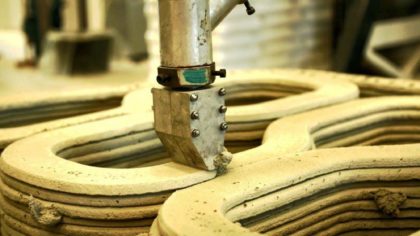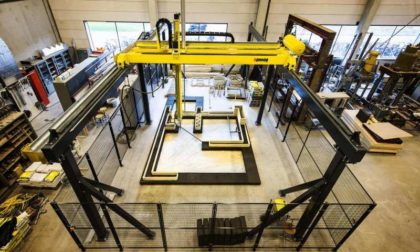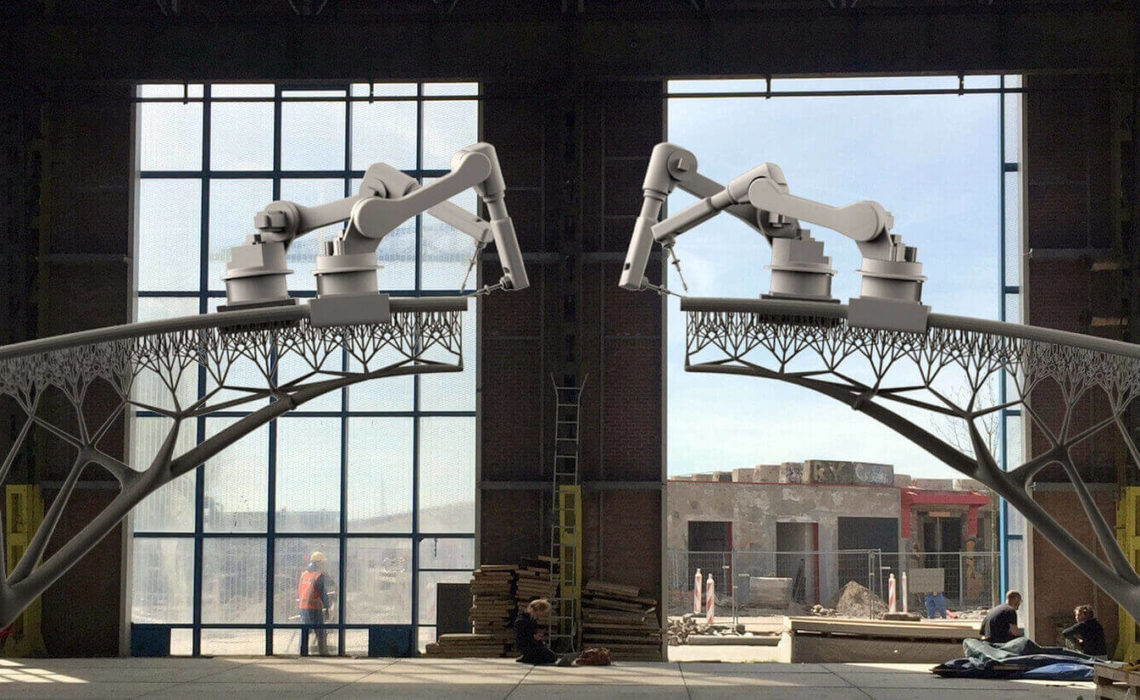
Remember in 2014 when Chinese company Winsun printed ten houses in one day, stunning the world? Today, three years later, 3D printed construction projects are less of a shocking reveal and more a part of everyday reality. In the last year alone, we have seen the installation of the first-ever 3D printed bridge, followed by two more 3D printed bridges, all in three different countries — and we’re being told to expect more in the near future. What’s going on? Why bridges? What is it about them that makes them prime candidates for 3D printing?
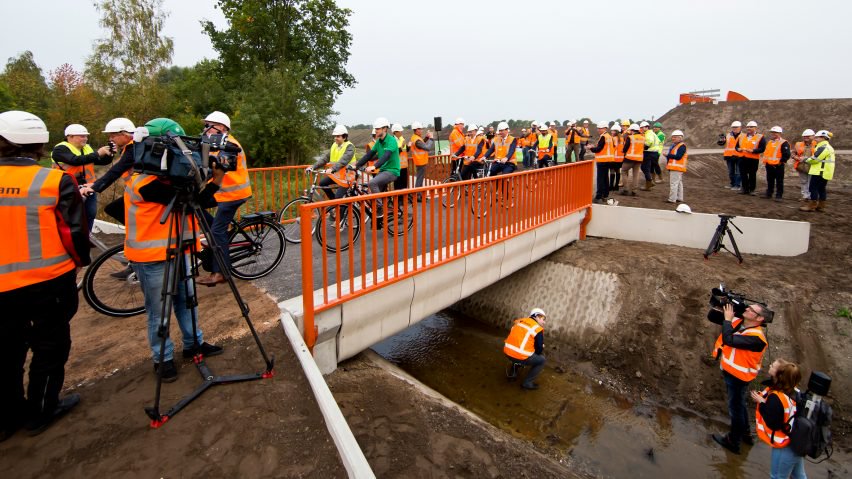
Gemert, the Netherlands’ 3D printed cycling bridge
3D printed construction and infrastructure projects have been executed and teased for years. Last year, the first fully 3D printed office was erected in Dubai. And now, Winsun is collaborating with Saudi Arabia to print over 1.5 million houses over the next five years.
Bridges, however, seem to be a transitional kind of object, allowing for experimentation with 3D printing materials and designs in a challenging, but ultimately limited construction project. To see this in action, let’s take a look at how 3D printed bridges are being developed and how they are changing the scene for 3D printed construction and the construction industry at large.
Just to get one thing clear, we are starting out small with these bridges. They’re essentially prototypes to help us identify and solve a lot of engineering challenges inherent in 3D printed construction. In Spain, we have a 12-meter long pedestrian bridge. In Amsterdam and Gemert, the Netherlands, bridges that stand at about 8 meters long. In Japan, Obayashi Corporation’s bridge is so small a child can step across in two strides.
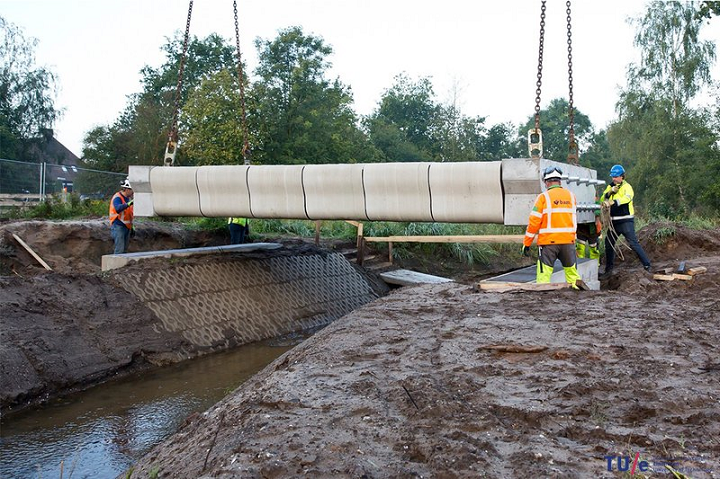
Gemert, the Netherlands’ 3D printed cycling bridge during installation
In terms of materials, bridges are a great place to start because they really only require one material — concrete. Of course, there are many ways to print out concrete. In Spain, the pedestrian bridge was made from concrete powder that is micro-reinforced with thermoplastic polypropylene. In Gemert, the recent cycle bridge boasts being the first bridge to be printed with steel-reinforced concrete, allowing it to support the weight of 40 trucks at a time.
By applying parametric design to the pedestrian bridge in Spain, concrete was printed only where necessary, reducing the waste, cost, and time required by traditional concrete pouring.
If you’ve seen desktop 3D printers, you know that they can be as small as a proverbial bread box. One of the obstacles with 3D printed construction is the size of the printers themselves, since standard models — whether desktop or industrial — have a set bounding box that limits the size of prints. For construction companies, one solution is to enlarge the entire machine, which is what Eindhoven University of Technology did when creating their concrete printing machine. It can print sections up to 11 meters long, 5 meters wide and 4 meters high.
The other direction to go is to implement a six-axis robotic arm that is not restricted by surface area but rather will print wherever you program it to. This is the approach Holland’s MX3D has taken to enable more creative design and unrestricted sizes. With these free-moving robots, onsite construction is indeed a possibility.

Speaking of robots, 3D printing construction dramatically reduces labor costs. Along with that comes reduction of labor-related injuries as well as need for and production of tools. For construction workers worried about the future of their employment, Theo Salet, a professor from Eindhoven University of Technology, says these jobs will not disappear. Rather they will adjust to these new processes of manufacturing, mainly to “build and maintain the robots.”
Bridges serve a mostly straightforward purpose — to support enough weight to provide transportation grounds over two pieces of land or over a body of water. But Eindhoven University of Technology believes these are a starting point to exploring how to integrate smart components to control temperature, lighting, and security, while taking advantage of additive manufacturing to add “strengthening agents, insulation, and even dirt repellants” into walls.

When can we expect to see these innovations in action? MX3D‘s smart steel bridge will be completed in Amsterdam by 2018. It will be printed with a sensor network that will continuously update engineers on the health status of the bridge through a 3D computer model.
Clearly, 3D printed bridges’ time has come, generating innovations that will pave the way for more sophisticated building construction on a much grander scale. For a full overview of current 3D printing construction projects, bridges and beyond, check out this comprehensive rundown. Today, 3D printed construction is an industry full of promise. What do you think? Will we end up living in vast 3D printed cities, or will the technology remain limited to high-profile vanity projects? Let us know your thoughts on the future of 3D printed construction and infrastructure in the comments below.



